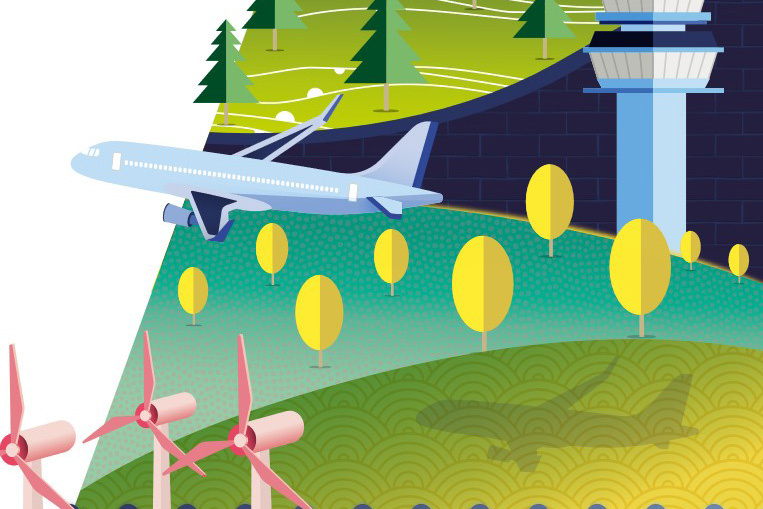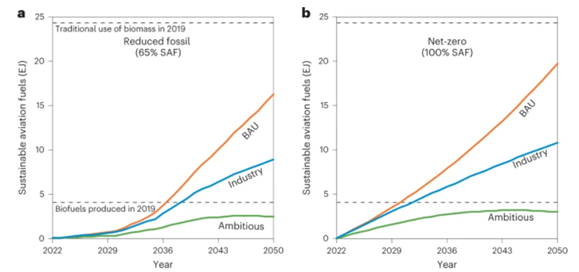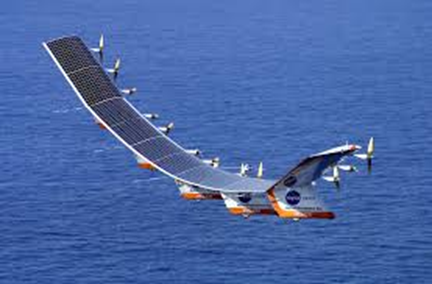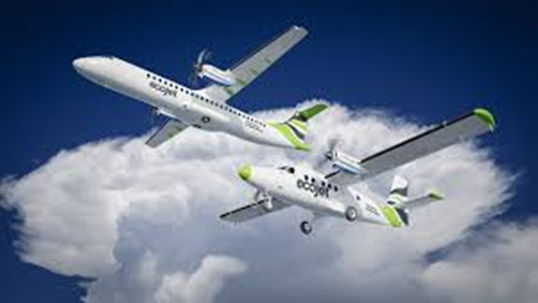PATHWAYS TO NET-ZERO EMISSIONS WITHIN AVIATION
Manasvi Kommuri • 2024-07-17
𝙄𝙣𝙨𝙩𝙞𝙩𝙪𝙩𝙚 - 𝙃𝙚𝙣𝙧𝙞𝙚𝙩𝙩𝙖 𝘽𝙖𝙧𝙣𝙚𝙩𝙩 𝙎𝙘𝙝𝙤𝙤𝙡 International climate goals aim for net-zero global carbon emissions by around mid-century. Achieving this within the aviation sector is particularly challenging due to the industry's reliance on energy-dense liquid fuels, which currently have no commercially viable alternatives. This article examines potential pathways to achieving net-zero emissions in aviation.
Global aviation currently accounts for approximately 3% of total global anthropogenic CO2 emissions, having increased by over a third between 2010 and 2019 alone. Without intervention, aviation could contribute to 22% of global emissions by 2050. While the current trajectory would lead to a 2.4°C rise in global temperatures, a net-zero roadmap aims to align the industry with a 1.5°C target. Leading companies such as Airbus, Rolls Royce, and Virgin Atlantic are exploring various methods to achieve this goal.
Most aviation companies are adopting a threefold directive, with the first component being Sustainable Aviation Fuels (SAF). SAF is an alternative fuel made from non-petroleum feedstocks, which reduces emissions from air transportation. Depending on the feedstock and production method, SAF can be blended at levels between 10% and 50%. It is often derived from renewable biomass and waste resources, offering the performance of petroleum-based jet fuel with a significantly lower carbon footprint, thus helping airlines decouple greenhouse gas (GHG) emissions from flight.
Recently, Virgin Atlantic launched its Flight100 initiative, flying the world's first 100% SAF-powered flight from London Heathrow to New York JFK. This milestone, resulting from a year of intense collaboration, demonstrates SAF's potential as a safe, drop-in replacement for fossil-derived jet fuel, compatible with existing engines, airframes, and fuel infrastructure. Flight100 highlights SAF's crucial role in the decarbonization of long-haul aviation and the path to Net Zero 2050. The fuel, made from waste products, offers up to 70% CO2 lifecycle emissions savings while performing like traditional jet fuel. Although other technologies such as electric and hydrogen propulsion are still decades away, SAF is available for immediate use. Currently, SAF represents less than 0.1% of global jet fuel volumes, with commercial jet engines permitting only a 50% SAF blend. Flight100 underscores that scaling up production hinges on policy and investment, urging industry and government to act swiftly to establish a robust UK SAF industry.
The second component involves Zero Emission Planes (ZEPs) powered by hydrogen or electricity. These planes use hydrogen in fuel cells to generate electricity, which then powers electric motors to turn the aircraft’s propellers. Hydrogen-powered electric flight offers a significant reduction in climate impact, with hydrogen fuel cells being two to three times more energy-efficient than traditional fuel combustion engines. The only byproduct from these engines is water. Unlike sustainable aviation fuel, hydrogen-electric engines address the issue of non-carbon emissions, including nitrogen oxides, particulates, soot, and high-temperature water vapor, which are potent climate forcing agents with a greater impact on climate change than carbon dioxide alone.
Hydrogen is also abundant, as it can be produced from water, and its production costs are expected to decrease significantly. According to PWC, the cost of green hydrogen will drop by 50% by 2030. On-site hydrogen production further reduces costs and ensures a completely zero-emission system from end to end.
Airbus is developing its hydrogen-powered ZEROe concept aircraft in collaboration with Delta. Rolls-Royce is partnering with EasyJet on hydrogen combustion engines and exploring hydrogen fuel cells. Boeing has also shown interest in hydrogen, having conducted initial tests in 2008. Additionally, new innovations in energy generation, such as solar power, are being tested. Solar Impulse is a Swiss project involving long-range experimental solar-powered aircraft. Led by Swiss engineer André Borschberg and psychiatrist Bertrand Piccard, the project's goal is to achieve the first circumnavigation of the Earth by a piloted fixed-wing aircraft using only solar power, highlighting the potential of clean technologies. The aircraft, a single-seated monoplane powered by photovoltaic cells, is capable of taking off under its own power and staying airborne for up to 36 hours.
On the other hand, electric aircraft, which we project will potentially cover a small (up to 0.2%) share of aviation RPKs by 2050, have hit turbulence; many startups are pivoting to hybrid electric designs instead. Airbus has rolled back plans to develop a narrowbody hydrogen aircraft and is now focusing on putting a smaller regional aircraft into service by 2035. Generally, these developments are consistent with the expectations of our BAU and Action scenarios, which assume no ZEP penetration.
The third component focuses on the financial and political aspects of incentivizing the path to net-zero aviation. Governments play a crucial role in creating policies that effectively accelerate the commercial production and deployment of SAF. Positive, supply-side incentives, which involve allocating public funds from various support mechanisms, are the most effective policy tools. These incentives reduce project risk, decrease the opportunity cost of producing SAF, and foster a compelling business case that supports the development of a sustainable market through organic supply and demand. With the adoption of the Long-Term Aspirational Goal (LTAG), governments share a unified target for aviation decarbonization and recognize the importance of SAF. Comprehensive policies and incentives are necessary to support SAF's success. Additionally, through the ICAO CAAF/3 process, governments have committed to achieving a 5% emissions reduction through the use of SAF by 2030. The CAAF/3 agreement clearly signals the global need for policies that enable real progress in aviation's journey towards net-zero emissions.
Ecotricity, a pioneer in green energy with over 27 years of experience, is making headlines with the launch of the first electric airline powered by renewable energy. Known for building Britain’s first megawatt windmill and the country’s first grid-scale solar park, Ecotricity generates 100% green electricity from the sun and wind. Now, the company is introducing the Ecojet aircraft by retrofitting conventional planes with hydrogen-electric powertrains. These converted Ecojet aircraft will maintain the same power output while achieving a 100% reduction in CO2 emissions. Initially, the use of kerosene-based fuel was necessary to launch quickly and secure operational logistics, but the ultimate goal is to run these aircraft entirely on renewable energy.
By repurposing old planes, Ecotricity will save 90,000 tonnes of carbon annually. The only byproduct of the Ecojet aircraft will be water, which will be captured and released into the lower atmosphere to avoid the harmful effects of contrails. Starting in 2024, Ecojet flights will be offered across the UK, beginning with the Edinburgh to Southampton route, and will expand to mainland Europe. The aircraft will have a range of 300 miles, with plans for long-haul flights in the future. Ecotricity is also enhancing the environmental sustainability of its Ecojet aircraft by offering only plant-based meals to passengers, eliminating single-use plastics onboard, and requiring staff to wear environmentally friendly uniforms. The cost of traveling on the Ecojet aircraft will be comparable to conventional flights, aiming to attract a broad market beyond just sustainability-conscious customers. In this way, this company is laying the groundwork for environmentally green aviation within the future generations.
With growing uncertainty over the approach to net zero, the airline industry is struggling to find a sustainable way of reducing its carbon emissions. Global efforts to stay within the 1.5°C temperature target of the Paris Agreement are off-track, and extreme weather events are more common than ever. While the aviation sector is a critical contributor to the global economy and provides important benefits enabling travel around the world, the sector is notoriously difficult to decarbonize. Whilst companies such as Virgin Atlantic, Rolls Royce and Airbus are making significant headway, progress is slow and much more work is needed in order to achieve complete net-zero emissions.
References : Sustainable Aviation Fuel.
Making Net-Zero Aviation Possible - Energy Transitions Commission
Net-Zero Aviation Is Possible With Hydrogen Fuel Cells | WIRED
https://www.nature.com/articles/s41893-022-01046-9
https://www.chathamhouse.org/2023/11/net-zero-and-role-aviation-industry
See More Posts
Copyright © 2021 Govest, Inc. All rights reserved.





